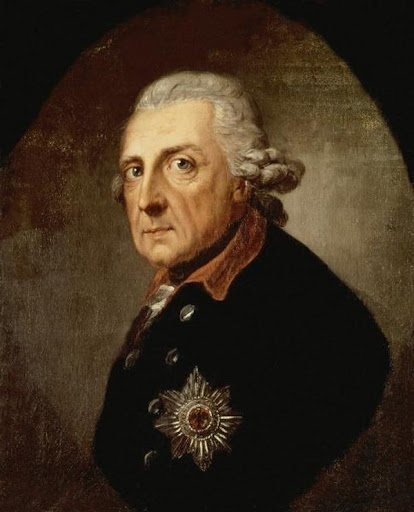Recently on this series we have been going through the many battles of the Seven Years’ War with one figure, Frederick II of Prussia, being at the forefront. While well-known to contemporaries there was a significant aspect of his life that people tried to erase from history – he was gay. For Pride Month we are doing a special looking into the queerness of Frederick the Great. This post is not intended to be a thorough biography of the Prussian king but rather a look into how we know about his sexuality, how he expressed himself, and the legacies of this.
Early Modern Sexuality
Before we start we have to actually define what we are talking about as labels can be both restrictive and emancipatory. For one, the terms we use today – gay and homosexual – either meant something else or would not be coined for a further century respectively. To early modern Europeans there was just sexuality where same-sex relations were deviations from this sexuality. Early modern sources about same-sex relationships refer to it as ‘sodomy’ or ‘buggery’ which were almost universally persecuted across Europe. Paris had a secret police investigating saloons where men were suspected of sleeping with one another; Florence cracked down on male sex workers; the London Society for the Reformation of Manners would alert authorities to ‘molly-houses’; and in the 1730s the Dutch Republic would execute 200 men for ‘sodomy’. Meanwhile, misogyny meant that female same-sex relations were not seen as valid relations with sex only being seen as ‘real’ if a penis was involved. As a result lesbian sex was seen as masturbation which was not as strictly taboo, although women could be charged if they dressed as a man or used a dildo during sex.
Sex was not the only factor determining whether you would be persecuted for same-sex relations. In Spain and its colonies your position determined how guilty you were with the one doing the penetrating being seen as extending their position as a man. One popular explanation for male same-sex relations that would emerge in the 1800s was that gay men were not actually attracted to men, but that they were instead attracted to the ‘woman’ in other men. Position in society could also determine whether someone would be persecuted for same-sex relations or crossing the gender line. Henry III of France would dress as a woman during balls and surround himself with male favourites; the brother of Louis XIV of France, Philippe d’Orleans, would crossdress and have affairs with men; and James VI and I of Scotland and England regularly had male lovers. These men could engage in homosexual and bisexual relations because they were aristocrats. If it was in private then they could freely go against gender stereotypes with little fear of persecution, although this could easily be a fine line. Accusations of lesbianism was levelled at Marie Antoinette providing justification for other political criticisms of her.
The Young Frederick
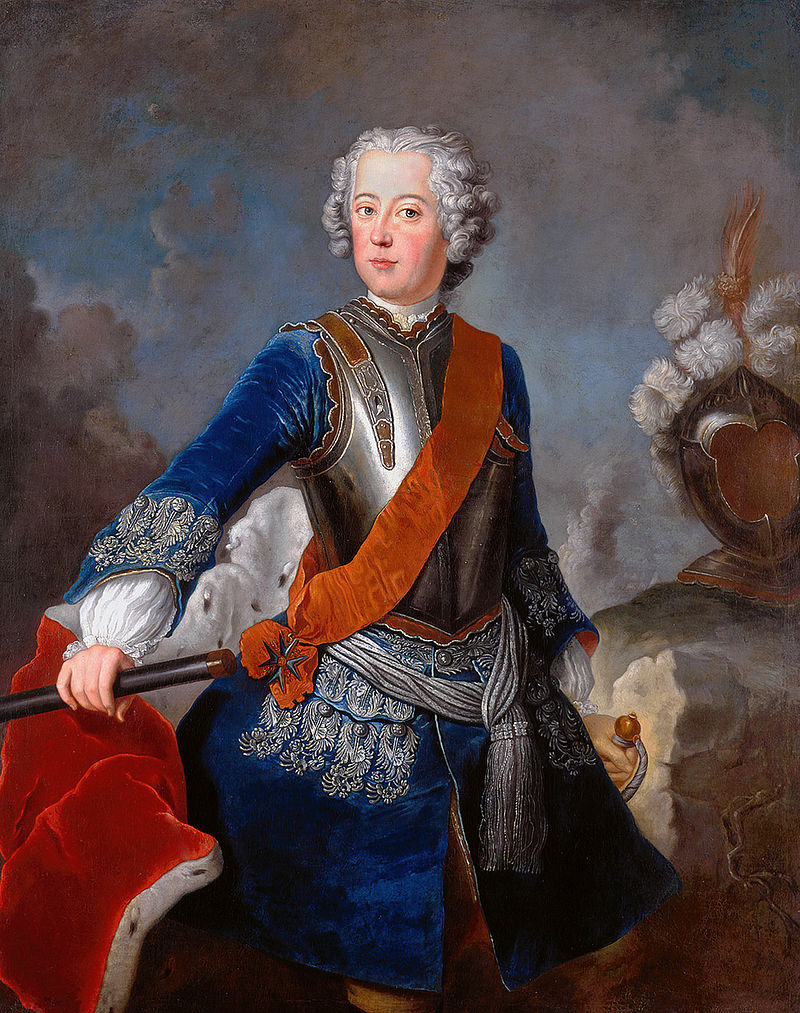
To understand Frederick’s queerness we also have to understand his tyrant of a father, Frederick William I of Prussia and the Elector of Brandenburg. His concept of masculinity was also out of tune with other leaders of Europe at the time. For many aristocrats and nobles engaging in the arts, writing poetry, and playing instruments was a sign of masculinity, something Frederick William disagreed with. Instead, he placed masculinity as being solely tied to militarism and warfare, something linked to his own state-building project which aimed to position Prussia as a military power in central Europe. Out of step with the rest of Europe (including his own father) Frederick William positioned the arts as being feminine. This was an issue in regards to his eldest son, the eventual Frederick II. Even from a young age Frederick was noted for his love for the arts – apparently on his sixth birthday he abandoned the lead toy soldiers he had been gifted and soon was serenading the ladies at court with a new book of French melodies. From childhood through teenage years Frederick was known as a lover of philosophy (aided by a vibrant printing press), a flutist, and a fan of French fashion, all of which angered his father. ‘I can not stand an effeminate fellow whose inclinations are not human, who can not ride or shoot… [who] curls his hair like a fop and will not have it cut‘.
We have two possible lovers during his teenage years, and it reflects a type that would continue throughout his life: both of these figures were older and more effeminate. The first was his father’s page Peter Karl Christoph von Keith, a 17-year-old who the 16-year-old Frederick became close to. The diaries of Wilhelmina, Frederick’s cherished older sister, corroborate the apparent common knowledge of the closeness between Frederick and Peter, which soon got back to Frederick William. The young Peter was dismissed as a page and eventually Frederick would find another lover. This was Hans Hermann von Katte, another page 8 years Frederick’s senior. The two would again grow close, as evident by how often he appears in Wilhelmina’s memoirs, which would eventually end in tragedy. The relationship with Katte has often been the one that has been glossed over the most in the historiography until recently, something we will go more into later. The overbearing nature of Frederick William and his open disdain for his son led to the two lovers wanting to escape. A young, and naïve, Frederick had the idea that together they could escape to Britain whose more liberal atmosphere compared to the harshness of Prussia could give them another life.
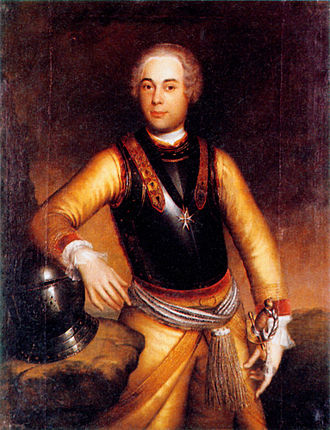
What followed was a tragedy. Frederick and Hermann had been plotting their escape from Prussia when a grievous mistake happened. Hermann was not the only member of the von Kattes to be in the Prussian military and an error meant some of Frederick’s letters went to one of Hermann’s cousins, who then proceeded to inform higher ups until news reached the king. In August 1730 Frederick tried to slip away from the royal family to rendezvous with Katte in Potsdam but both were caught and imprisoned in Kustrin. Apocalyptic with rage Frederick William wanted to have his own son executed, using the fact that Frederick was in the military making his escape an act of treason, until the Holy Roman Emperor himself intervened. Instead, Frederick would face internal exile and, even worse, was forced to watch the execution of his love. Luckily for Frederick he fainted just as the swordsman swung his blade. For the next two years Frederick William aimed to disinherit his son and replace him with one of his brothers – ironically Prince Henry would also be open about his preference for men years later. In 1732 Frederick was allowed back to Berlin if he accepted Elizabeth Christine of Brunswick as his wife. It is not surprising that this was a loveless marriage done entirely out of convenience. In May 1740 Frederick William I died after a long period of illness allowing Frederick to come to power as Frederick II of Prussia.
Queering the Reign of Frederick
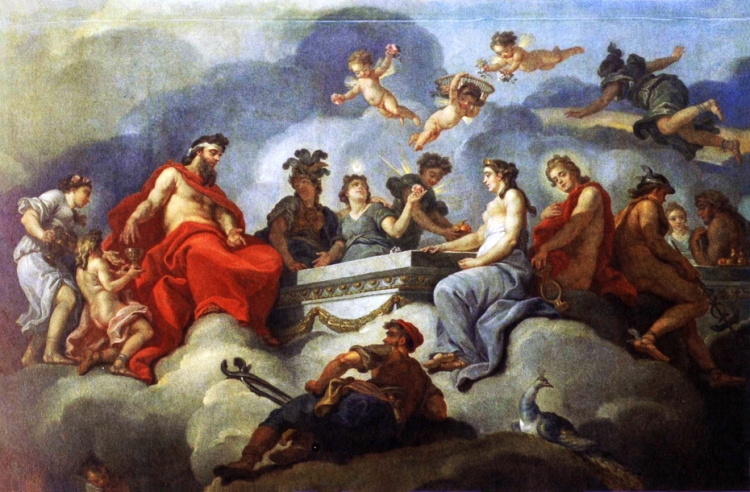
As mentioned above, Frederick was a patron of the arts and became known as one of Europe’s ‘Enlightened Despots’ – absolute monarchs who styled themselves as being influenced by Enlightenment philosophy. Frederick himself was a major patron for artists and philosophers alike, for example he developed a friendship with Voltaire. Again we can see his sexuality come through when we actually look at what art he sponsored. Like many in the Enlightenment he looked back to the Romans and Greeks and evoking the Classics he sponsored and bought art that evoked Greco-Roman homoeroticism. At times he managed to get the originals in his palace at Potsdam, most importantly a fresco depicting Ganymede being taken to Olympus. For those who do not know Greek mythology Ganymede was a young man who caught the eye of Zeus who brought him to Olympus as his lover and wine bearer. Knowing that Frederick liked older men we can perhaps see why he wanted this fresco. Famously, when his beloved sister Wilhelmina died he had memorial built to her called the Temple of Friendship in 1758. Directly inspired by Greek architecture and myth on the pillars that hold up the domed roof male heroes of Greek mythology decorate it.
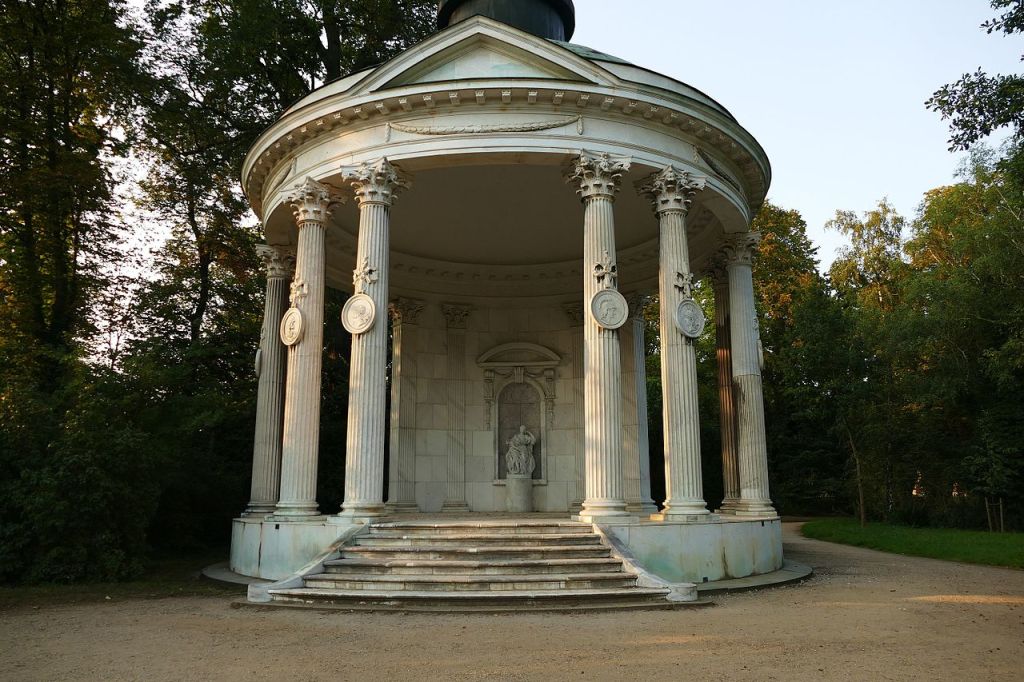
Frederick was keen to bring back the old concept of the arts and masculinity going hand-in-hand. Unlike his father, Frederick would personally lead armies into war, notably the War of Austrian Succession and Seven Years’ War, reaffirming his position as a masculine figure. By then engaging in the arts it restored the arts as a masculine field. Frederick himself tried to be a philosopher, such as publishing Anti-Machiavelli. A rebuttal to Machiavelli’s The Prince, (although it is unclear if Machiavelli wrote it as a satire) he argued that leaders should have the needs of their subjects in mind instead of ruthless pragmatism. Under Frederick Prussia saw a boom in the arts as artists and philosophers came to Berlin and Potsdam to get the king’s ear. Although neglected in a loveless marriage Elizabeth Christine became known as a great philanthropist, going as far as saving Frederick’s art during the Russian siege of Berlin during the Seven Years’ War.
All throughout this it was an open secret about Frederick’s sexuality. His friend and critic Voltaire gave him the nickname ‘Luc’, when read backwards it is ‘cul’, a vulgar word in French for ‘anus’. Courts and artists across Europe regularly referenced Frederick’s sexuality with William Hogarth’s The Toilette (1743) in the corner depicting a flutist in front of a painting of the abduction of Ganymede. Frederick was also somewhat open about his sexuality, writing in a letter after a defeat during the Seven Years’ War he wrote ‘Fortune has it in for me; she is a woman, and I am not that way inclined’. We also know that Frederick wrote a homoerotic poem to Venetian poet Francesco Algarotti around 1740, discovered almost by accident (as many historical finds are) by Vanessa de Sanerclens it has the title ‘The Orgasm’:
This night, vigorous desire in full measure,
Algarotti wallowed in a sea of pleasure.
A body not even a Praxitiles fashions
Redoubled his senses and imbued his passions
Everything that speaks to eyes and touches hearts,
Was found in the fond object that enflamed his parts.
Transported by love and trembling with excitement
In Cloris’ arms he yields himself to contentment
The love that unites them heated their embraces
And tied bodies and arms as tightly as laces.
Divine sensual pleasure! To the world a king!
Mother of their delights, an unstaunchable spring,
Speak through my verses, lend me your voice and tenses
Tell of their fire, acts, the ecstasy of their senses!
Our fortunate lovers, transported high above
Know only themselves in the fury of love:
Kissing, enjoying, feeling, sighing and dying
Reviving, kissing, then back to pleasure flying.
And in Knidos’ grove, breathless and worn out
Was these lovers’ happy destiny, without doubt.
But all joy is finite; in the morning ends the bout.
Fortunate the man whose mind was never the prey
To luxury, or grand airs, one who knows how to say
A moment of climax for a fortunate lover
Is worth so many aeons of star-spangled honour.
Making Frederick Straight
Almost immediately after he died Frederick started being presented as being disinterested in women but not gay. Shortly after his death in 1786 Frederick’s longtime physician Johann von Zimmermann claimed that Frederick was not homosexual but instead was impotent. Zimmermann alleged that an attempt to cure gonorrhoea when he was young left the future king feeling he was impotent. Frederick’s very open misogyny was therefore a projection of his own impotency according to Zimmermann. However, surgeon Gottlieb Engel who prepared the king’s corpse said there was nothing to suggest a surgery accidentally left the king impotent, and his official biographer similarly doubted Zimmermann’s claim. Frederick the Great’s intense sexism (gay men can be misogynistic) was instead the reason for him foregoing women and avoiding his long suffering queen. Then ideas of masculinity and German nationalism began to shift.
Frederick finished what his father began – the turning of Prussia into a heavily militarised European power. The common refrain of ‘while other states have an army, Prussia’s army has a state’ came to fruition through the conquests and reforms of Frederick which also saw the shift in perceptions of masculinity. Following Frederick’s death and throughout the nineteenth-century masculinity became tied to militarism. For Prussians Frederick became the masculine archetype for his military prowess, not his patronage of the arts. Eventually, in 1871, Prussia succeeded in forging a united Germany further elevating Frederick’s standing as a German nationalist and masculine figure. Homophobic figures from the conservative Otto von Bismarck to Hitler himself propped up Frederick as a symbol of Germanic masculine power that Germany had to emulate to become a global power. Frederick’s homosexuality was forgotten, his relationships reduced to platonic friendships. This continued after the destruction of Prussia as a political entity following the Second World War. Historians continued obscuring his relationships, one example is found in Mary Kittredge’s 1987 biography of the king which describes Katte as his ‘best friend’. However, Frederick’s sexuality was not entirely forgotten.
Remembering the Queerness
Quite often in history the viewpoints of minorities were overlooked, ignored, and ridiculed until an established academic confirmed what they were saying. Frederick’s homosexuality was another example of this. Sixty years before Kittredge described Frederick and Katte being ‘best friends’ gay Germans were holding up Frederick as a symbol of their own. Frederick’s image regularly appeared in gay publications celebrating Germany’s national hero as one of their own. The publication Jahrbuch in 1902 published a letter reading ‘If we judge homosexuality to be immoral we must we not also then agree that the great and noble figures who manifested this orientation be excluded from the ranks of humanity?…. Should the love of a Michelangelo, a Shakespeare, or Frederick the Great be considered immoral?‘. With the more liberal atmosphere of the Weimar Republic following the collapse of the German Empire in 1918 turned Berlin into the gay capital of Europe and at the centre of this was Frederick the Great.
Frederick the Great as a nationalist figure was used by the Nazis, especially a specific branch of the Nazis. The Nazi paramilitary organisation the SA was led by Ernst Rohm and despite the Nazis denouncing homosexuality as ‘degenerate’ Rohm was gay. For Rohm the Prussian king was a perfect role model – a homosexual who forged German power through fire and blood. This did not stop the Nazis from also side-lining Frederick’s homosexuality and eventually having Rohm killed, and as the Nazi terror was finally destroyed Frederick’s place in post-war Germany remained in the air. He had been venerated by the Nazis so the king’s image in German iconography was soon dropped. When research began again on Frederick the Great in the 1960s the continued repression of LGBTQ+ identities meant this aspect of his own identity was omitted or reduced to platonic friendship. As the late-1980s gave way to the 1990s and queer historians began re-evaluating the past did Frederick’s queerness come to light once again.
Frederick the Great is an interesting case. An artistic soul wanting love this was snatched by the system that he lived up, but instead of bringing an end to that system he entrenched it. Frederick’s militarism set Prussia onto a course of conflict that would see armed conflict as the marker of belonging, citizenship, and what it meant to be a man. His acceptance in society was based on his success and his position, his blue blood was barely enough to spare him when his father had Katte executed. It is this history of state-building and militarism that allowed German nationalists to gloss over the rest of his history – the gay, French-loving, artistic, and tolerant (or as tolerant as an eighteenth-century statesman could be) king was replaced by the iron fisted ruler that set Prussia up for success. We know so much about Frederick, but it reminds us how much histories can be co-opted or forgotten.
Bibliography:
- T.C.W. Blanning, Frederick the Great: King of Prussia, (New York, NY: Random House, 2016)
- Avi Lifschitz, (ed.), Frederick the Great’s Philosophical Writings, (Princeton, NJ: Princeton University Press, 2021)
- Mary Kittredge, Frederick the Great, (New York, NY: Chelsea House Publishers, 1987)
- Merry Wiesner-Hanks, Early Modern Europe, 1450-1789, Third Edition, (Cambridge: Cambridge University Press, 2023)
- Huw Lemmey and Ben Miller, Bad Gays: A Homosexual History, (London: Verso, 2022)
- Emperor Tigerstar, ‘Frederick the Great: The Gay King of Europe’, YouTube.com, (25/06/2021), [Accessed 19/06/2024]
- Robert Beachy, ‘The German Invention of Homosexuality’, The Journal of Modern History, 82:4, (2010), 801-838
- Robert Beachy, Gay Berlin: Birthplace of a Modern Identity, (New York, NY: Alfred Knopf, 2014)
